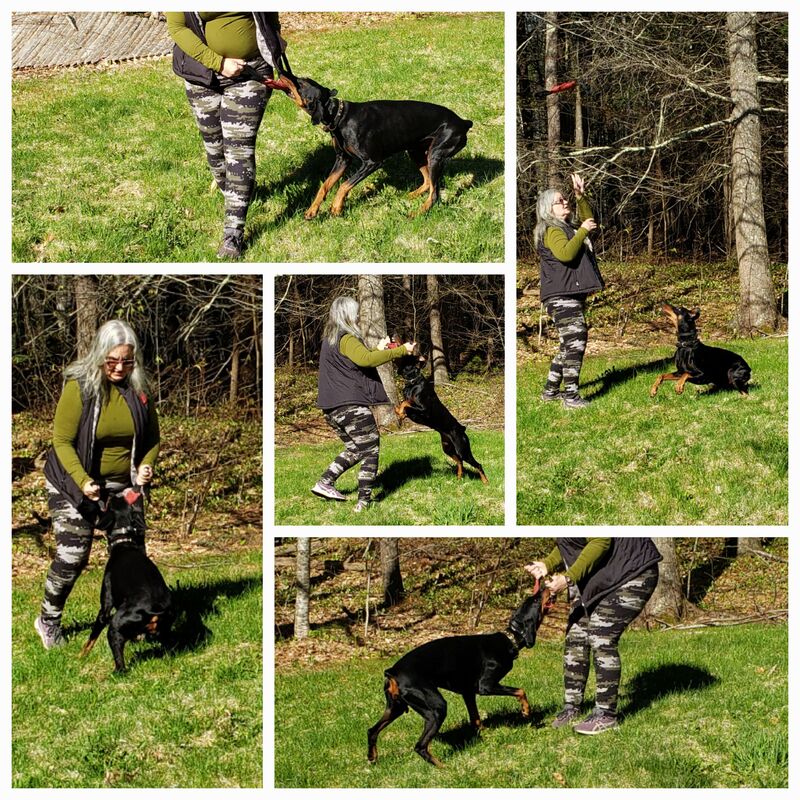
- Not being sure continued play reward or reward is reinforcing the desired behavior or performance. If you are not thinking and focusing on your timing, then you could be reinforcing the undesirable behavior or performance. Also if your timing is quick enough with the reward portion of the exercise, your dog will begin to lack excitement and motivation.
- Inserting the toy or food into your dog's mouth instead of handling these like a chase the prey game. Even if they like the toy or food in less than exciting circumstances, you will not get the optimal motivation and drive to build and advance the things you can do with play training. Be creative and move your toy or food around like play to get your dog into the chase.
- Playing with toys and your dog in too intense environments or around too intense distractions. Toys, especially, are highly exciting in a game. You can also be building frustration and drive that you do not want, if you do not choose your environments wisely. I don't like to see my dog as anxious or tense when I am engaged in a game with a toy and my dog. I have made this mistake, and it can be a big one that fosters reactivity and defense drive (that you do not want).
- Badly timed food rewards or giving into demand barking by giving the food before bad behavior stops can make the behaviors you are trying to change worse.
- Getting bored with creating the game and then trying to move on too fast to the things that will dampen the drive and motivation. Remember you are creating a feeling of excitement, in the beginning it is not about performance per say (other than enthusiastic play).
- When you start out playing with the toy and food as prey too be chased, you can move the game along too fast, rough, and/ or to slow. With a puppy or shy dog, you want to just be gentle and catch their attention at first. With a young athletic and confident dog, you don't want to be too slow and lethargic. You can experiment and see what the dog responds to the most.
- Snatching your hand away due to fear of being bitten by accident will really cause you all sorts of problems later on. Learning how to hold onto the toy, teach your dog to target a certain bite area, and keeping control of the food in a closed fist, are the ways to teach your dog controlled play and decrease the risk of an accidental bite or nip. Snatching your hand away also communicates to your dog that the chase game is on. There are times where we are moving the toy or food into a miss, and that is not what I am talking about here.
- Not using training and management tools when needed can decrease your chances of shaping and teaching your dog what you want them to learn. For instance a leash with a collar or harness, can help you prevent your dog from running from the room after eating the food reward or in a game of keep away (that you did not intend) with a toy.
- One way to get clothes ripped or get an accidental bite or nip is to hold toys too close to body parts. Also waving the toy around those body parts without a controlled strategy can make this a too common occurrence. Be aware and with a plan and discipline in your body movements for play training.
- Don't let outsiders (onlooking family members, friends or strangers) distract or interrupt your training. This is time for you and your dog, and for you and your dog to learn how your partnership works.
This series is likely to continue in three more parts. Stay tuned, and please ask any questions on our blog or on our Facebook page. We are happy to answer them and to help out.
 RSS Feed
RSS Feed